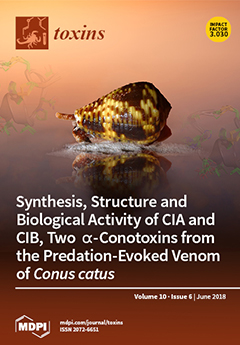Dinophysis spp. are a major source of diarrheic toxins to marine food webs, especially during blooms. This study documented the occurrence, in late May 2016, of a massive toxic bloom of the
Dinophysis acuminata complex along the southern coast of Brazil, associated with an episode of marked salinity stratification. The study tracked the daily vertical distribution of
Dinophysis spp. cells and their ciliate prey,
Mesodinium cf.
rubrum, and quantified the amount of lipophilic toxins present in seston and accumulated by various marine organisms in the food web. The abundance of the
D. acuminata complex reached 43 × 10
4 cells·L
−1 at 1.0 m depth at the peak of the bloom. Maximum cell densities of cryptophyceans and
M. cf.
rubrum (>500 × 10
4 and 18 × 10
4 cell·L
−1, respectively) were recorded on the first day of sampling, one week before the peak in abundance of the
D. acuminata complex. The diarrheic toxin okadaic acid (OA) was the only toxin detected during the bloom, attaining unprecedented, high concentrations of up to 829 µg·L
−1 in seston, and 143 ± 93 pg·cell
−1 in individually picked cells of the
D. acuminata complex. Suspension-feeders such as the mussel,
Perna perna, and barnacle,
Megabalanus tintinnabulum, accumulated maximum OA levels (up to 578.4 and 21.9 µg total OA·Kg
−1, respectively) during early bloom stages, whereas predators and detritivores such as Caprellidae amphipods (154.6 µg·Kg
−1),
Stramonita haemastoma gastropods (111.6 µg·Kg
−1),
Pilumnus spinosissimus crabs (33.4 µg·Kg
−1) and a commercially important species of shrimp,
Xiphopenaeus kroyeri (7.2 µg·Kg
−1), only incorporated OA from mid- to late bloom stages. Conjugated forms of OA were dominant (>70%) in most organisms, except in blenny fish,
Hypleurochilus fissicornis, and polychaetes,
Pseudonereis palpata (up to 59.3 and 164.6 µg total OA·Kg
−1, respectively), which contained mostly free-OA throughout the bloom. Although algal toxins are only regulated in bivalves during toxic blooms in most countries, including Brazil, this study indicates that human seafood consumers might be exposed to moderate toxin levels from a variety of other vectors during intense toxic outbreaks.
Full article






